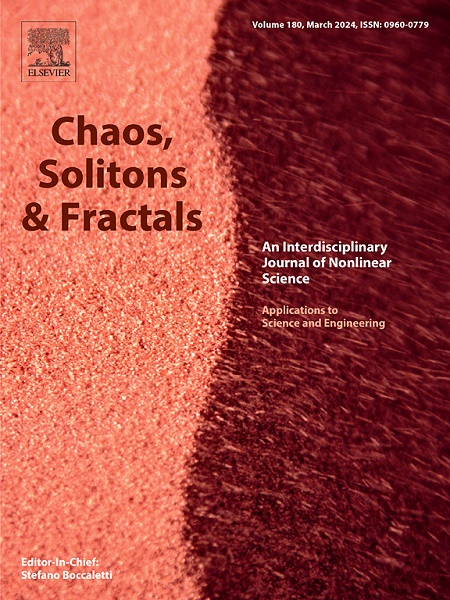On the evolution and importance of the Fibonacci sequence in visualization of fractals
IF 5.6
1区 数学
Q1 MATHEMATICS, INTERDISCIPLINARY APPLICATIONS
引用次数: 0
Abstract
The Fibonacci sequence is a fascinating mathematical concept with profound significance across various disciplines. Beyond theoretical intrigue, it finds practical applications in art, architecture, nature, and financial markets. The Fibonacci sequence, defined by each number is the sum of the two preceding ones (0, 1, 1, 2, 3, 5, 8, 13, …). This sequence of numbers, often attributed to the 12th century Italian mathematician Leonardo of Pisa, known as Fibonacci, has earlier roots in Indian mathematics. Acharya Pingala referenced this sequence in his work centuries before. This paper explores the evolution of the Fibonacci sequence and its modern applications, particularly in fractal geometry. We examine Mandelbrot and Julia sets for various functions and study the symmetries of the Mandelbrot and Julia sets obtained using the Fibonacci–Mann orbit. Additionally, we investigate the impact of parameter on the Mandelbrot and Julia sets. To quantify these effects, we employ three measures: Average Escape Time (AET), Non-Escaping Area Index (NAI), and Average Number of Iterations (ANI).
论斐波那契数列在分形可视化中的演化及其重要性
斐波那契数列是一个迷人的数学概念,在各个学科中都具有深远的意义。除了理论上的吸引力,它还在艺术、建筑、自然和金融市场中找到了实际应用。由每个数字定义的斐波那契数列是前两个数列(0,1,1,2,3,5,8,13,…)的和。这个数列通常被认为是12世纪意大利数学家列奥纳多的作品,被称为斐波那契,早在印度数学中就有根源。几个世纪前,Acharya Pingala在他的作品中引用了这个序列。本文探讨了斐波那契数列的演变及其现代应用,特别是在分形几何中的应用。我们研究了各种函数的Mandelbrot和Julia集,并研究了使用斐波那契-曼轨道获得的Mandelbrot和Julia集的对称性。此外,我们研究了参数a对Mandelbrot集和Julia集的影响。为了量化这些影响,我们采用了三个度量:平均逃逸时间(AET)、非逃逸区域指数(NAI)和平均迭代次数(ANI)。
本文章由计算机程序翻译,如有差异,请以英文原文为准。
求助全文
约1分钟内获得全文
求助全文
来源期刊

Chaos Solitons & Fractals
物理-数学跨学科应用
CiteScore
13.20
自引率
10.30%
发文量
1087
审稿时长
9 months
期刊介绍:
Chaos, Solitons & Fractals strives to establish itself as a premier journal in the interdisciplinary realm of Nonlinear Science, Non-equilibrium, and Complex Phenomena. It welcomes submissions covering a broad spectrum of topics within this field, including dynamics, non-equilibrium processes in physics, chemistry, and geophysics, complex matter and networks, mathematical models, computational biology, applications to quantum and mesoscopic phenomena, fluctuations and random processes, self-organization, and social phenomena.
 求助内容:
求助内容: 应助结果提醒方式:
应助结果提醒方式:


